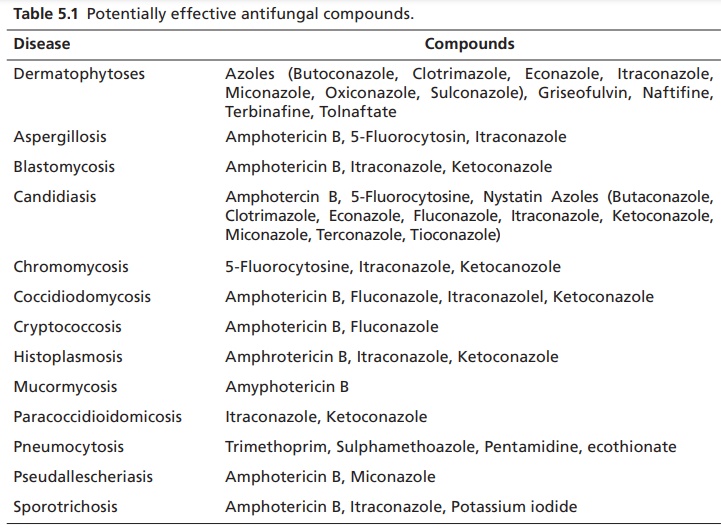Classification of Antifungal Agents
| Home | | Medicinal Chemistry |Chapter: Medicinal Chemistry : Antifungal Agents
On the basis of some differences, fungi may be classified as follows: a. Phyco myelitis (algae-like) b. Asco myelitis (sac-like) c. Basidio myelitis (mushrooms) d. Duetero myelitis
CLASSIFICATION
On the basis
of some differences, fungi may be classified as follows:
a.
Phyco
myelitis (algae-like)
b.
Asco
myelitis (sac-like)
c.
Basidio
myelitis (mushrooms)
d.
Duetero
myelitis
The
potentially effective antifungal compounds are listed in Table 5.1.
Classification Based on the Chemical Structure, Action, and Source
The
antifungal agents can be divided into the following classes, based on their
chemical structure, mechanism of action, and source:
I. Antibiotics:
Amphotericin B, Nystatin, Griseofulvin
II. Azoles
(imidazole, triazole derivates)
Table 5.1 Potentially effective antifungal compounds.

Triazoles—Fluconazole,
Itraconzole, Terconazole
Imidazoles—Clotrimazole,
Ketoconazole, Miconazole, Bifonazole, Butoconazole, and Zinoconazole
III. Fluorinated
pyrimidines: Flucytosine
IV. Chitin
synthetase inhibitors: Nikomycin Z
V. Peptides/proteins:
Cispentacin
VI. Miscellaneous:
Ciclopirox, Tolnaftate, Naftifine, and Terbinafine
Classification Based on the Route of Administration
I. Drugs for
subcutaneous and systemic mycoses: Amphotericin B, Fluconazole, Flucytosine,
Itraconazole, Ketoconazole.
II. Drugs
for superficial mycoses: Clotrimazole, Econazole, Griseofluvin, Miconazole,
Nystatin.
